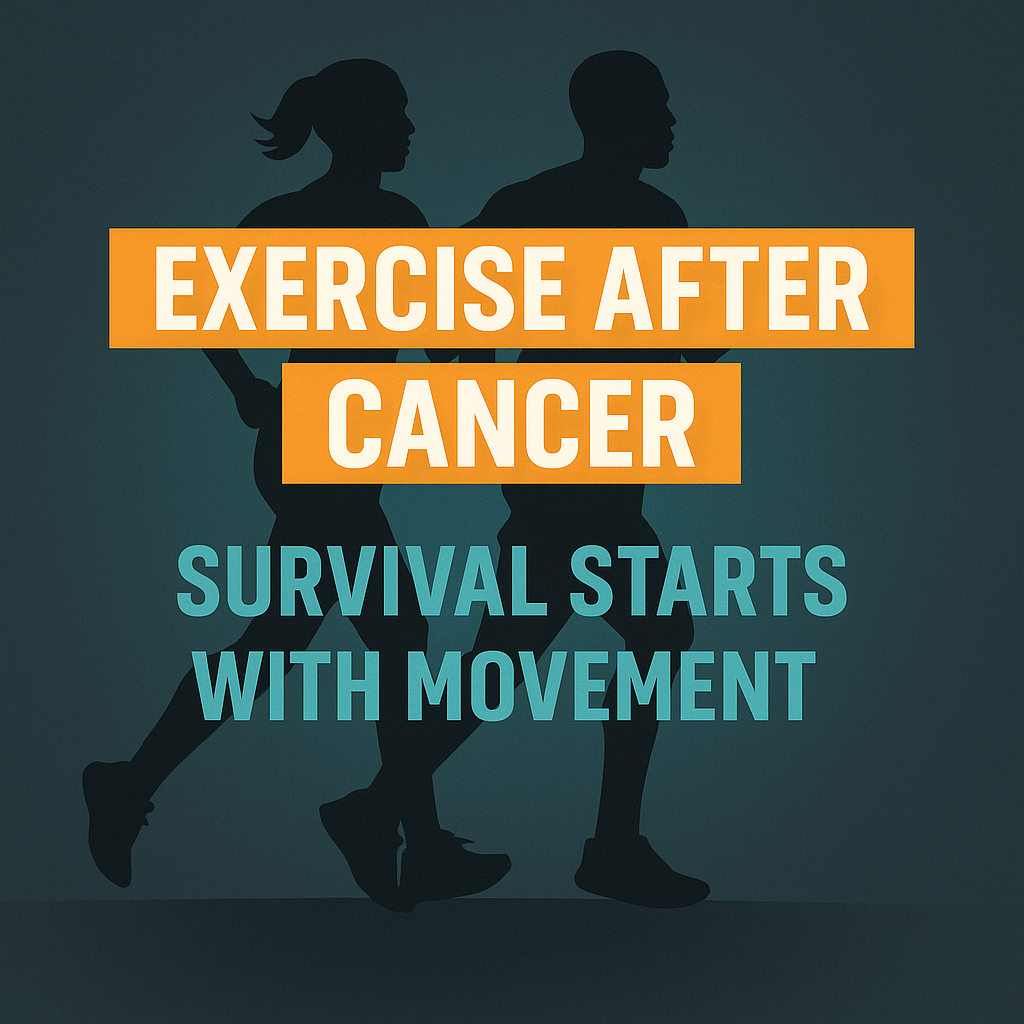
Exercise After Cancer Treatment: How Physical Activity Improves Survival and Reduces Recurrence
Share
When cancer treatment ends, many survivors are left asking: What now? Beyond regular scans and follow-ups, what can you actually do to reduce the risk of cancer returning?
A growing body of research gives a clear answer: exercise.
Far from being just “rehab” or a way to feel better after chemotherapy or surgery, exercise is emerging as one of the most powerful tools cancer survivors have to improve survival. In some cancers, physical activity can lower recurrence and even reduce the risk of death.
The Landmark CHALLENGE / CO.21 Trial in Colon Cancer
The strongest evidence comes from the CHALLENGE (Colon Health and Life-Long Exercise Change) / CO.21 trial, a randomized controlled trial published in the Journal of Clinical Oncology in 2023.
- Who was studied? Colon cancer survivors who had completed treatment for stage II or III disease.
-
What was compared?
- A structured, supervised exercise program (aerobic + resistance training, ~150 min/week) for 3 years
- Usual care (no structured exercise program)
-
The results?
- 28% lower risk of cancer recurrence or new cancer in the exercise group
- 37% lower risk of death compared to the control group
-
These are not small, “feel-good” changes. They are hard clinical outcomes — recurrence and mortality. This trial firmly positions exercise as a survival intervention, not just a quality-of-life booster.
Does Exercise Help in Other Cancers?
While CHALLENGE was specific to colon cancer, research in other cancers points to the same pattern: exercise lowers recurrence risk, improves survival, and enhances treatment tolerance.
Breast Cancer
- Large cohort studies (Nurses’ Health Study, Life After Cancer Epidemiology study) show women who exercise after treatment have a 25–40% lower risk of breast cancer recurrence and death.
- Mechanisms: reduced estrogen and insulin levels, less inflammation, healthier body composition.
Prostate Cancer
- Men with localized prostate cancer who regularly engage in vigorous exercise (like jogging, swimming, or cycling) have lower progression rates and improved survival.
- Exercise may slow disease progression by regulating hormones and reducing inflammation.
Lung Cancer
- Survivors who remain active show better cardiorespiratory fitness and lower treatment-related fatigue.
- Early evidence suggests exercise may improve survival, but large RCTs (like CHALLENGE) are still needed.
Hematologic Cancers (Leukemia, Lymphoma, Myeloma)
- Exercise during and after treatment improves immune recovery, reduces fatigue, and helps rebuild strength.
- While data on recurrence are limited, survivors who exercise tolerate treatment better and experience fewer complications.
Why Exercise Affects Cancer Outcomes
The biological reasons exercise works are consistent across cancers:
- Improved insulin sensitivity – Lower blood sugar and insulin mean fewer growth signals for tumor cells.
- Reduced chronic inflammation – Exercise lowers pro-inflammatory cytokines that promote tumor growth.
- Enhanced immune function – Physical activity boosts natural killer cell and T-cell activity, improving the body’s cancer surveillance.
- Hormone regulation – Exercise balances hormones like estrogen and IGF-1, reducing cancer-promoting environments.
- Better body composition – Maintaining muscle and reducing excess body fat creates conditions less favorable for recurrence.
What Guidelines Say
Because of the accumulating evidence, major organizations now recommend exercise as part of survivorship care:
- American Cancer Society: At least 150 minutes of moderate exercise per week plus strength training 2+ days per week.
- American College of Sports Medicine (ACSM): Exercise is safe and effective during and after most cancer treatments.
- NCCN Survivorship Guidelines: Encourage structured activity tailored to the individual’s fitness and health status.
Practical Takeaways for Survivors
- Aim for 150 minutes of moderate-to-vigorous exercise per week (walking, cycling, swimming, jogging).
- Add resistance training 2–3 times per week to preserve muscle and strength.
- Start small if needed — even short walks or light strength training build up over time.
- Work with your healthcare team if you’re recovering from surgery, chemo, or radiation.
The Key Takeaway
The CHALLENGE / CO.21 trial proved it for colon cancer: structured exercise lowers recurrence and extends survival. And the broader evidence suggests these benefits apply to breast, prostate, lung, and other cancers as well.
Exercise is not just an “extra.” For cancer survivors, it’s part of the treatment plan. Movement is medicine — and in this case, it may be the difference between remission and recurrence.
References
• Courneya KS, Booth CM, Gill S, et al. Effects of structured exercise on disease outcomes in colon cancer survivors: CHALLENGE (CO.21) trial. J Clin Oncol. 2023;41(18):3296–3307. doi:10.1200/JCO.22.02754
• Holmes MD, Chen WY, Feskanich D, Kroenke CH, Colditz GA. Physical activity and survival after breast cancer diagnosis. JAMA. 2005;293(20):2479-2486.
• Kenfield SA, Stampfer MJ, Giovannucci E, Chan JM. Physical activity and survival after prostate cancer diagnosis. J Clin Oncol. 2011;29(6):726-732.
• Jones LW, Demark-Wahnefried W. Physical activity and cancer survivorship: a translational research review. J Support Oncol. 2006;4(4):157-167.
